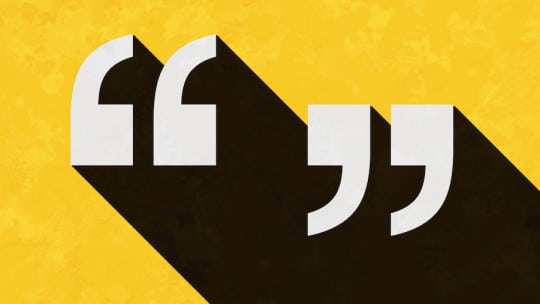
When you're developing a news release, a good quote can make all the difference in giving character and perspective to your announcement. Once you've laid out the what, when, where and who, a quote from a spokesperson fills in the why: why your brand is passionate about an issue, why something needed to be done, why something is significant, why the reader should care.
In the PR News Writer's Guidebook, Pauline A. Howes, associate professor at Kennesaw State University's School of Communication and Media, provides the following tips to keep in mind for writing and editing quotations for a news release:
- Write like real people talk. Be conversational, yet avoid trite, filler language.
- Use phrasing that is memorable and helps create a picture in the reader’s mind.
- Provide meaningful insights and perspectives in a quote that increase the value of the quote and the likelihood of its pick-up by media. Opinion is fine, but hype is counterproductive.
- Avoid jargon, technical and scientific terms that might need further explanation or definition.
- Strike a balance with quotation length: Say enough to convey a complete thought, but not too much. Think Goldilocks—not too long, not too short, but just right for the purpose.
- Include information that adds detail and depth to the story, not just basic facts that can be covered in the body of the release.
- Use a straightforward style when attributing a quote. The verbs “said” and “says” provide a direct way to attribute a quote. The use of attribution phrases such as “according to,” “stated” and “commented” may fit better in a feature article than a news release.
- Consider the appropriate tense for the subject and type of news. When referring to a completed action or referring to something that has already happened, use the past tense. For a more timeless tone, the present tense works.
- As you do for your entire news release, check your facts and proofread to avoid grammar and punctuation errors or the dreaded typo. And finally, be sure to provide the accurate name and spelling of your cited source.
Follow Ian on Twitter: @ianwright0101
